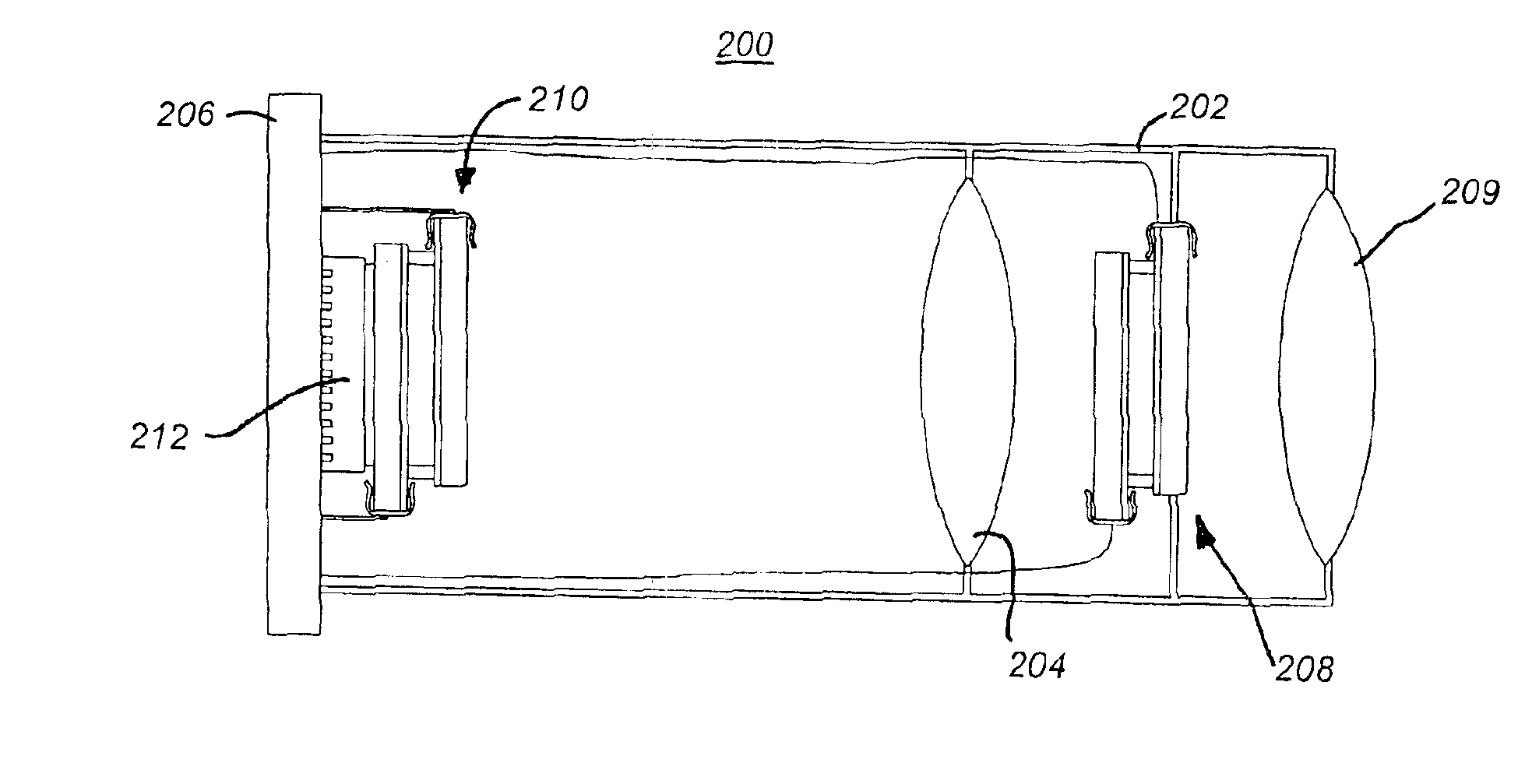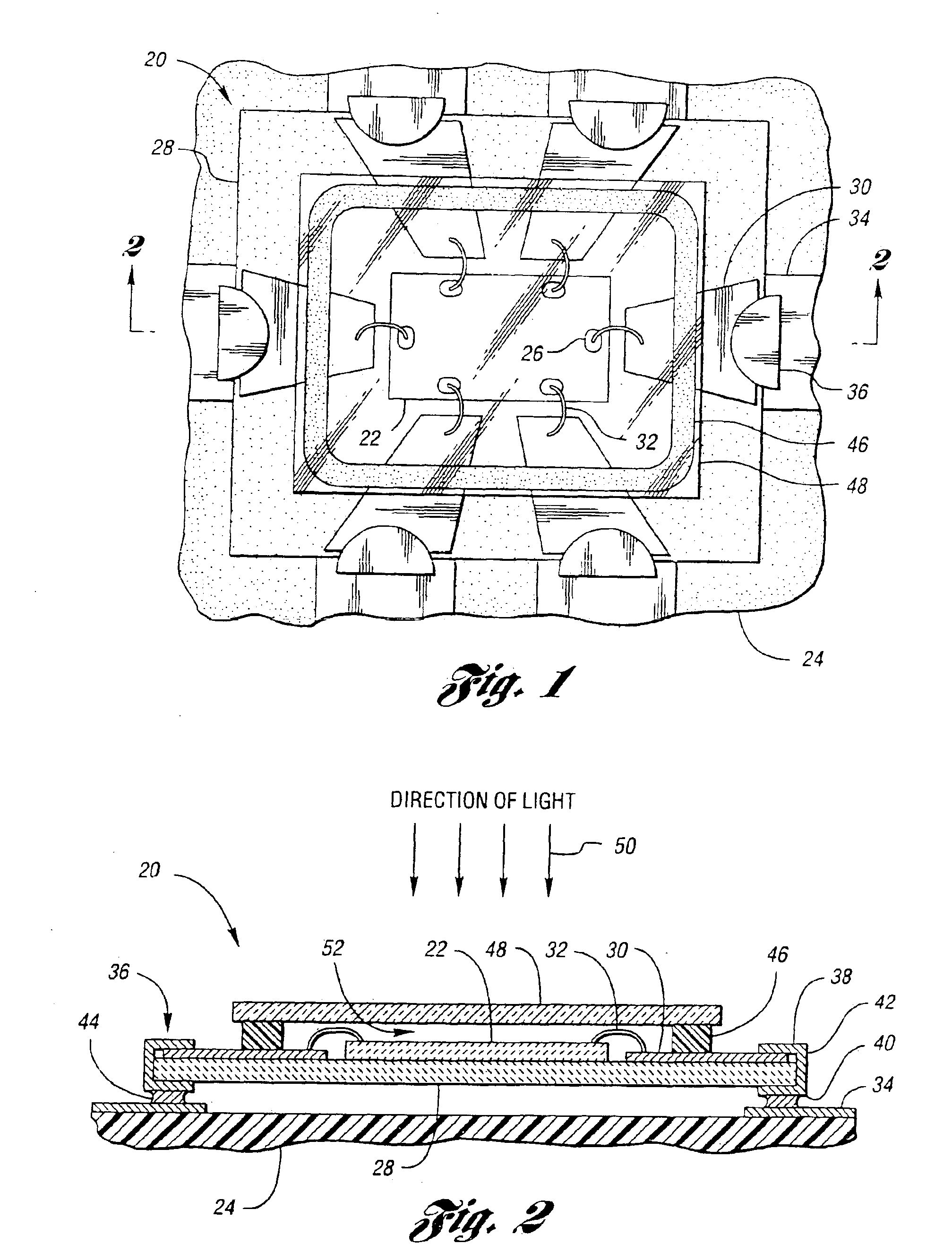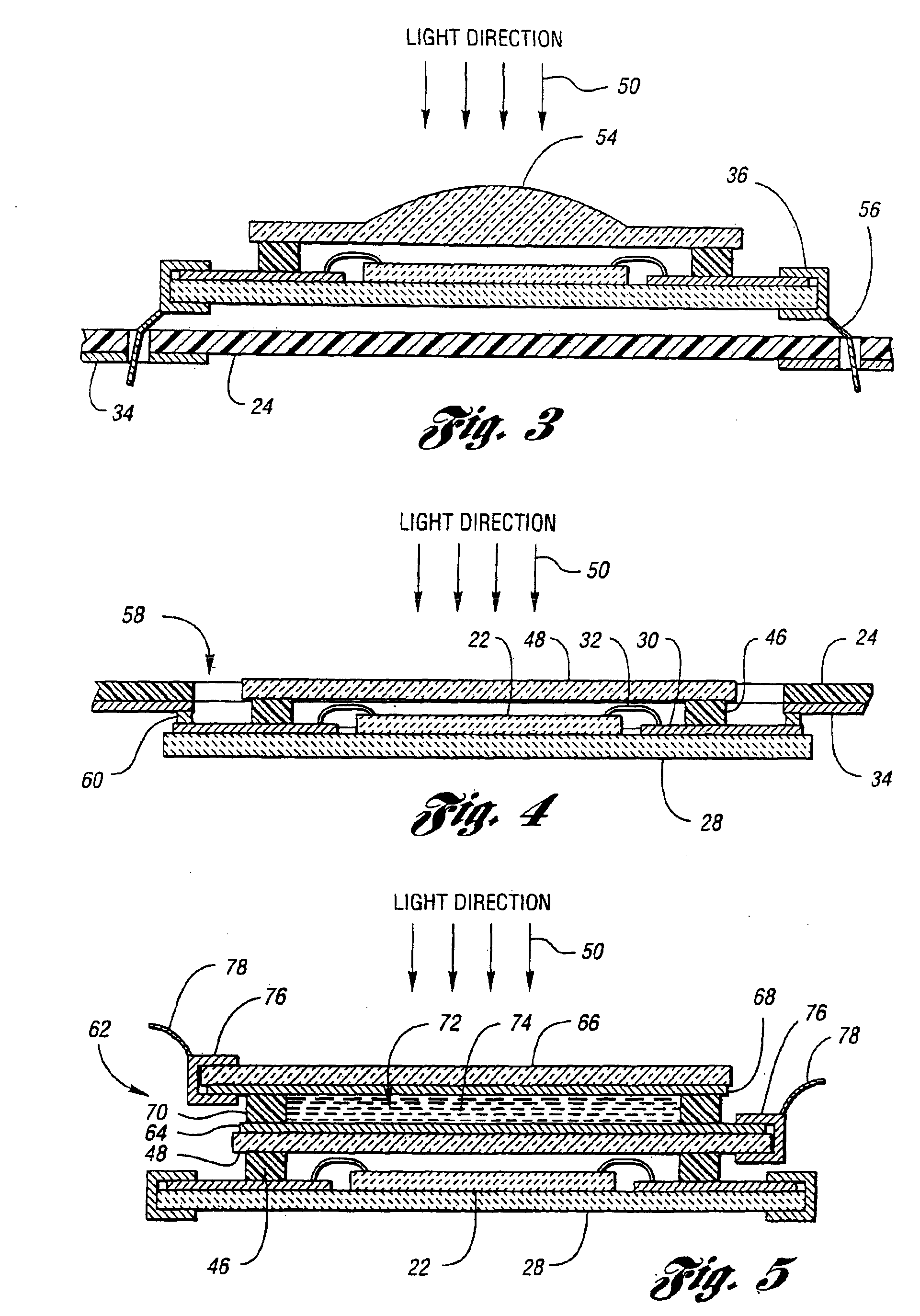Devices incorporating electrochromic elements and optical sensors
a technology of optical sensors and electrochromic elements, which is applied in the direction of optical radiation measurement, printers, lenses, etc., can solve the problems of sensor washout at a high light level, excessively long scan time for dim scenes, and high cost of packaging assemblies
- Summary
- Abstract
- Description
- Claims
- Application Information
AI Technical Summary
Benefits of technology
Problems solved by technology
Method used
Image
Examples
Embodiment Construction
[0046]Referring now to FIGS. 1 through 5 and 8 through 17, drawings of embodiments of the present invention are shown. These drawings are not to scale and are provided to show the relationships amongst various elements used to construct the optical sensor package. Further, directional designations such as top and bottom are used for clarity of explanation and are not meant to restrict the present invention to any particular orientation.
[0047]Referring now to FIG. 1, an overhead view, and to FIG. 2, a cross-sectional view, an embodiment of the present invention is shown. An enclosure assembly 20 is provided to encapsulate an optical sensor 22. Enclosure assembly 20 is designed to be mounted on a support substrate 24 which may be, for example, a printed circuit board, flexible circuit, ceramic substrate, or the like.
[0048]Optical sensor 22 is an integrated circuit chip. Optical sensor 22 may be, for example, an image sensor including an array of pixel sensors and support electronics. ...
PUM
| Property | Measurement | Unit |
|---|---|---|
| scan time | aaaaa | aaaaa |
| thickness | aaaaa | aaaaa |
| thickness | aaaaa | aaaaa |
Abstract
Description
Claims
Application Information
 Login to View More
Login to View More - R&D
- Intellectual Property
- Life Sciences
- Materials
- Tech Scout
- Unparalleled Data Quality
- Higher Quality Content
- 60% Fewer Hallucinations
Browse by: Latest US Patents, China's latest patents, Technical Efficacy Thesaurus, Application Domain, Technology Topic, Popular Technical Reports.
© 2025 PatSnap. All rights reserved.Legal|Privacy policy|Modern Slavery Act Transparency Statement|Sitemap|About US| Contact US: help@patsnap.com



